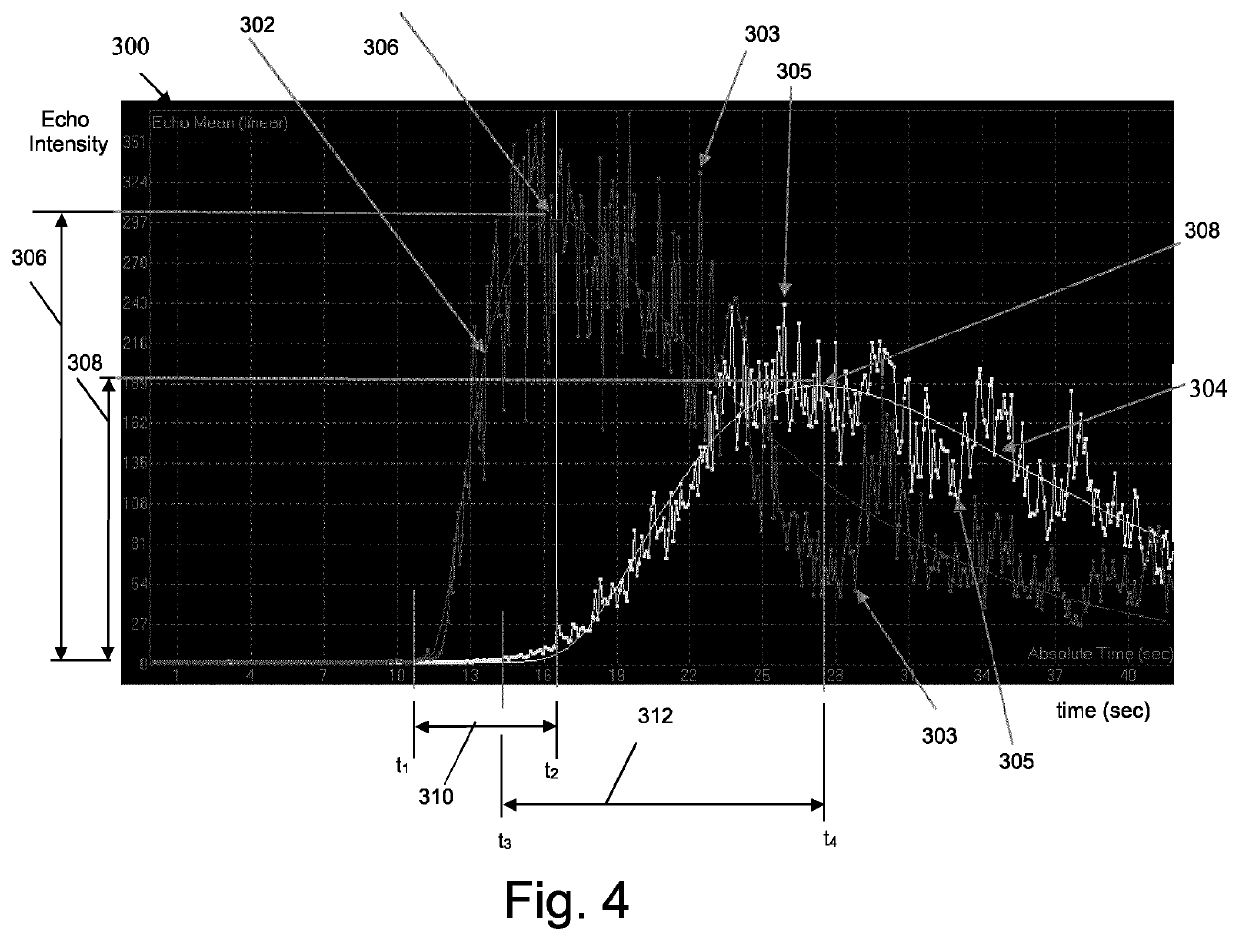System and method for characterizing liver perfusion of contrast agent flow
a contrast agent and flow technology, applied in the field of systems for characterizing liver perfusion of contrast agent flow, can solve the problems of difficult detection of liver lesions and inability to distinguish separate amounts, and achieve the effect of effective treatmen
- Summary
- Abstract
- Description
- Claims
- Application Information
AI Technical Summary
Benefits of technology
Problems solved by technology
Method used
Image
Examples
Embodiment Construction
[0028]FIG. 1 is an illustration of the liver and its flow network. The liver contains vessel trees for three sources of flow: the biliary tree for the flow of liver bile, the portal vein 10 which provides a nourishing flow of blood from the abdomen, and the hepatic artery 12 which is a source of arterial blood flow. The capillary structures of these networks are intertwined throughout the parenchyma, causing liver tissue to be perfused with blood from both arterial and venous sources. The hepatic artery 12 and portal vein 10 can be accessed separately where they enter the organ at the bottom of the liver as shown in the illustration.
[0029]FIG. 2 shows two ultrasound images, a contrast image on the left and a B mode image on the right, illustrating the location of the hepatic artery 12 and its blood flow. The two images were acquired at the same time with the vascular system perfused with a microbubble contrast agent. The contrast image on the left was processed by enhancing the harm...
PUM
 Login to View More
Login to View More Abstract
Description
Claims
Application Information
 Login to View More
Login to View More - R&D
- Intellectual Property
- Life Sciences
- Materials
- Tech Scout
- Unparalleled Data Quality
- Higher Quality Content
- 60% Fewer Hallucinations
Browse by: Latest US Patents, China's latest patents, Technical Efficacy Thesaurus, Application Domain, Technology Topic, Popular Technical Reports.
© 2025 PatSnap. All rights reserved.Legal|Privacy policy|Modern Slavery Act Transparency Statement|Sitemap|About US| Contact US: help@patsnap.com



